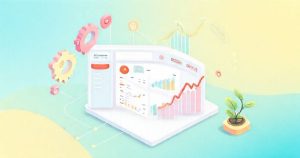In today’s competitive e-commerce landscape, Etsy sellers are constantly seeking ways to streamline operations, expand reach, and enhance overall efficiency. The key to achieving these goals often lies in leveraging effective Etsy integrations. These powerful tools connect your Etsy shop with various third-party applications, automating tasks and providing valuable insights that can significantly boost productivity and profitability. Understanding the diverse range of available integrations and how they can benefit your unique business model is crucial for sustainable growth and success in the digital marketplace.
What are Etsy Integrations: Enhancing Your Online Store Operations
Etsy integrations refer to the process of connecting your Etsy shop to external software applications or platforms. These connections allow data to flow seamlessly between your store and other tools, automating manual processes and centralizing information. For sellers, this means less time spent on repetitive administrative tasks and more time dedicated to creation, marketing, and customer engagement. Effective Etsy integrations are designed to simplify complex workflows, from inventory management to shipping and accounting, ultimately contributing to a more efficient and scalable business.
The core benefit of utilizing Etsy integrations is the ability to create a more cohesive and automated selling ecosystem. Instead of manually updating spreadsheets or transferring order details, integrated systems communicate with each other in real-time. This reduces the margin for error, ensures data consistency across platforms, and frees up valuable time for strategic decision-making. Whether you are a budding artisan or an established small business, understanding and implementing the right Etsy integrations can be a transformative step towards optimizing your online presence.
Streamlining Inventory Management with Etsy Integrations
Managing inventory can be one of the most time-consuming aspects of running an Etsy shop, especially for sellers with a large product catalog or those selling across multiple platforms. Inventory management Etsy integrations automate the tracking of stock levels, ensuring that product quantities are accurate and updated in real-time. These tools help prevent overselling, which can lead to customer dissatisfaction and negative reviews, by automatically adjusting stock as sales occur on Etsy or other connected marketplaces. Sellers can monitor their inventory from a centralized dashboard, making replenishment decisions more informed.
Beyond simple stock tracking, advanced inventory Etsy integrations often provide features like low-stock alerts, detailed sales analytics, and even demand forecasting. This allows sellers to anticipate popular items and order supplies proactively, minimizing potential stockouts and maximizing sales opportunities. For businesses selling unique, handmade, or one-of-a-kind items, these integrations can also help in managing product variations and ensuring that each distinct item is correctly listed and accounted for. The efficiency gained here directly impacts operational costs and customer satisfaction.
Optimizing Shipping and Fulfillment with Etsy Integrations
Efficient shipping is paramount for customer satisfaction and repeat business on Etsy. Shipping and label printing Etsy integrations streamline the entire fulfillment process, from order import to label generation and tracking. These tools often connect directly with major shipping carriers, allowing sellers to compare rates, print discounted labels, and schedule pickups directly from their integrated dashboard. This significantly reduces the time spent on manual data entry and trips to the post office, ensuring orders are processed quickly and accurately.
Many shipping Etsy integrations also offer automated tracking updates, sending notifications to both the seller and the customer. This transparency builds trust and reduces inquiries about order status, freeing up customer service resources. Furthermore, some integrations provide advanced features like package insurance options, customs form automation for international orders, and even batch label printing for high-volume sellers. By simplifying the complexities of logistics, these integrations empower Etsy sellers to focus more on their craft and less on the backend mechanics of delivery.
Effortless Accounting and Bookkeeping with Etsy Integrations
Keeping accurate financial records is vital for any business, and Etsy shops are no exception. Accounting and bookkeeping Etsy integrations automate the transfer of sales data, expenses, and other financial transactions from your Etsy store directly into your accounting software. This eliminates the need for manual data entry, drastically reducing the chances of errors and saving countless hours during tax season. Sellers can easily track income, expenses, and profit margins, gaining clear insights into their financial health.
These essential Etsy integrations often categorize transactions automatically, reconcile bank accounts, and generate comprehensive financial reports with minimal effort. This level of automation ensures that your books are always up-to-date and compliant, providing a clear picture of your business performance. Whether you use popular platforms like QuickBooks or Xero, connecting them to your Etsy shop ensures that financial management is no longer a daunting task but a smooth, integrated part of your business operations. This allows for better financial planning and decision-making.
Integrating Print-on-Demand (POD) for Expanded Product Offerings
For many Etsy sellers, especially those focused on graphic design or unique artwork, print-on-demand (POD) Etsy integrations offer a powerful way to expand product lines without managing physical inventory. These integrations connect your Etsy shop with POD suppliers, allowing you to create custom products like t-shirts, mugs, phone cases, and art prints, which are then produced and shipped directly to your customers only after an order is placed. This model eliminates upfront inventory costs and the complexities of storage and fulfillment.
POD Etsy integrations automate the entire process: when a customer places an order on your Etsy shop, the integration automatically sends the order details and design file to your chosen POD supplier. The supplier then prints the item, packages it, and ships it directly to the customer under your brand. This hands-off approach enables sellers to offer a wider variety of products, test new designs with minimal risk, and focus solely on marketing and creative development. It’s a highly scalable solution for designers and artists.
Harnessing Marketing and Email Automation with Etsy Integrations
Building strong customer relationships and driving repeat sales is crucial for long-term success on Etsy. Marketing and email automation Etsy integrations help sellers connect with their audience more effectively. These tools can automatically add new customers to email lists, send personalized welcome messages, follow-up emails after purchases, or even send abandoned cart reminders. This automated communication nurtures leads and strengthens customer loyalty without constant manual intervention from the seller.
Beyond email, some marketing Etsy integrations offer advanced analytics to track customer behavior, identify purchasing patterns, and segment audiences for targeted campaigns. This allows sellers to create highly relevant promotions and product recommendations, increasing conversion rates. By automating marketing efforts, sellers can maintain consistent engagement with their customer base, promote new listings, and announce sales, all while freeing up time to focus on other aspects of their business. Effective marketing is key to driving sustained growth.
Etsy Integration for Multi-Channel Selling: Expanding Your Reach
Many Etsy sellers aspire to expand their reach beyond a single marketplace. Multi-channel selling Etsy integrations are specifically designed to help businesses manage their product listings, inventory, and orders across various e-commerce platforms like Shopify, Amazon, or eBay, in addition to Etsy. These integrations act as a central hub, synchronizing product data and stock levels across all connected channels, preventing overselling and ensuring consistency.
The primary advantage of these Etsy integrations is the ability to manage your entire online presence from one dashboard. When a product sells on one platform, the stock level is automatically updated on all others. This unified approach simplifies operations, reduces administrative overhead, and allows sellers to tap into new customer segments without the complexities of juggling multiple separate accounts. Expanding your market reach through effective multi-channel integrations can significantly increase sales volume and brand visibility.
Choosing the Right Etsy Integrations: Key Considerations
Selecting the most suitable Etsy integrations requires careful consideration of your specific business needs, budget, and growth aspirations. Begin by identifying your biggest pain points: Is it inventory management, shipping, or accounting? Prioritize integrations that address these critical areas first. Evaluate the integration’s compatibility with your existing software and ensure it offers the specific features your business requires. Look for user-friendly interfaces and reliable customer support.
Consider the pricing models of different Etsy integrations, as some are subscription-based, while others might charge per transaction or offer tiered plans. Assess the scalability of the integration; will it continue to meet your needs as your business grows? Reading reviews from other Etsy sellers can provide valuable insights into the performance and reliability of various tools. A strategic approach to choosing Etsy integrations ensures you invest in solutions that truly enhance your operations and contribute to long-term success.
Maximizing Efficiency: The Strategic Advantages of Etsy Integrations
Etsy integrations are not just conveniences; they are strategic tools that empower sellers to operate more efficiently, intelligently, and profitably. By automating repetitive tasks, centralizing data, and providing actionable insights, these integrations free up valuable time and resources. From seamless inventory management and expedited shipping to robust financial tracking and expanded marketing capabilities, the right set of Etsy integrations can transform a small crafting hobby into a scalable and sustainable business. Embracing these technological solutions is a definitive step towards optimizing your Etsy shop for continued success in a dynamic marketplace.






